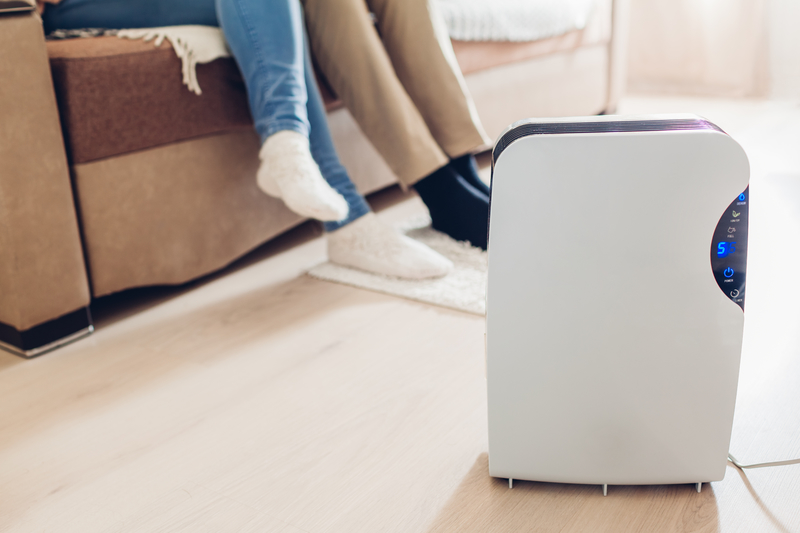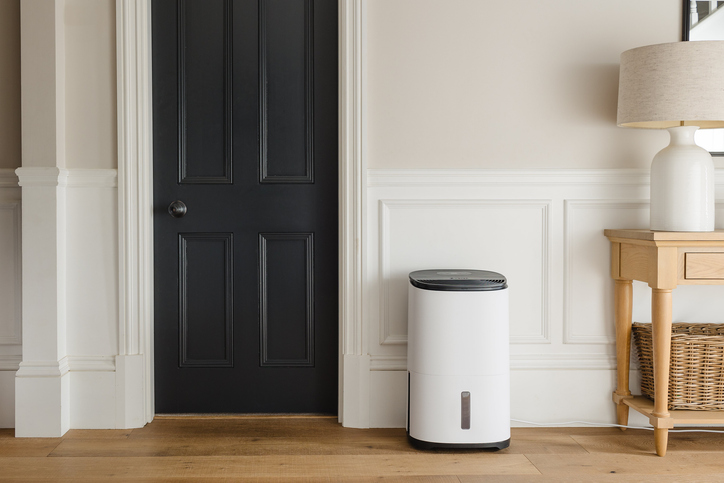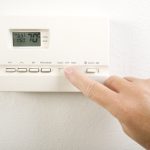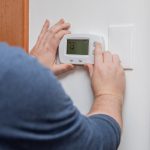
What Does a Dehumidifier Do For Your Home?
Dehumidifiers are useful machines that can remove the excess moisture from your home while protecting all your prized belongings from damage. They are used to make the house feel more comfortable and livable. However, dehumidifiers are also favorable because of their health benefits. These machines are especially helpful to people with asthma, helping them breathe easier, as it removes airborne particles from the home.
In this article, you will learn what a dehumidifier does for a home and how to choose the right one.
How do Dehumidifiers Work?
Dehumidifiers work by taking the hot air in a room and passing it through a fan inside the machine. The moisture in the air is stuck inside the machine, and the resulting dry air is cycled back into the room.
Once your room has been dried out with the use of a dehumidifier, there is much less of a chance that condensation will settle on your possessions. Mold will have a harder time forming, and items will remain safe and unaffected by moisture damage. The size of your dehumidifier depends on how large the area is that you wish to keep cool and dry.
The dehumidifiers vary in terms of how much moisture they can remove from a space. The smallest is 30 points per day, and the largest is over 90 points per day.
Humidity Level
It’s important to know how much humidity the dehumidifier removes from your house. The humidity level and how long it stays in the air can affect potential mold growth or moisture damage. For example, if the humidity level is above 60%, mold will start to become a serious issue, and will not go away.
Checking the humidity level of the home is fairly simple. Visually, you should be able to see obvious signs of humidity, such as condensation on the windows, mildew growth, or water stains on ceilings and walls. To test the level more accurately, you can purchase a hygrometer for your home. It runs on batteries and resembles a temperature gauge. By following the instructions provided by the manufacturer, you should be able to use your hygrometer to check the humidity levels of the house and set your dehumidifier correspondingly.

What Does a Dehumidifier Do for a Home and How to Use It?
The benefits of a dehumidifier for a home:
- Reduces humidity levels. Dehumidifiers lower the moisture in the air, creating a more comfortable living environment. This is especially useful in regions with high humidity.
- Prevents mold growth. Excess humidity fosters mold and mildew growth, which can damage your home and belongings. A dehumidifier helps prevent these issues by maintaining optimal humidity levels.
- Alleviates allergy symptoms. Dust mites, mold, and mildew thrive in humid conditions and can trigger allergies and asthma. Reducing humidity can alleviate symptoms and improve indoor air quality.
- Protects furniture and belongings. High humidity can cause wood to warp, paint to peel, and electronics to malfunction. A dehumidifier helps protect your furniture, books, and electronics from moisture damage.
- Improves air quality. By reducing moisture, dehumidifiers help eliminate musty odors and prevent the spread of airborne pollutants, leading to fresher and cleaner air.
- Increases comfort. Lower humidity levels make the air feel cooler, reducing the need for air conditioning. This can also help lower energy bills.
- Prevents condensation. In colder months, excess moisture can lead to condensation on windows and walls, causing damage and promoting mold growth. A dehumidifier helps prevent this by maintaining balanced humidity levels.
- Promotes better sleep. Excessive humidity can make it challenging to sleep comfortably. A dehumidifier creates a more pleasant sleeping environment by reducing moisture and improving air quality.
So what does a dehumidifier do for a home? Overall, a dehumidifier is a valuable addition to any home, promoting a healthier, more comfortable living space and protecting your property from moisture-related issues.
How to Use It?
Your dehumidifier should have a fill indicator on it, which will let you know exactly when you have to empty it. The frequency of having to empty it will depend on where you are located, and what the climate conditions are like. It can vary from once every few days, to multiple times per day.
If you are a forgetful type of person and don’t want to worry about remembering to empty the bucket, there is an alternative. You can run a drain hose from the dehumidifier into a floor drain or sump pump. This means that the dehumidifier will automatically drain water as soon as it has been collected.
How to Choose a Dehumidifier For a Home?
It is important to know not only what a dehumidifier does for a home, but also how to choose the right one.
When choosing a dehumidifier for your home, there are several important factors to consider to ensure you select the right one for your needs. First, you need to determine the size of the area where you plan to use the dehumidifier. Measure the room and understand that dehumidifiers are rated by the amount of moisture they can remove in a day, typically measured in pints. Smaller rooms or spaces up to 500 square feet will require a smaller capacity unit, up to 30 pints per day, whereas larger spaces over 1500 square feet will need a dehumidifier with a capacity of 50 to 70 pints per day.
Next, assess the humidity levels in your home. Using a hygrometer can help you measure the current humidity. If it consistently exceeds 60%, a dehumidifier is necessary. The type of dehumidifier is also a critical consideration. Portable dehumidifiers are versatile and can be moved around to target specific areas, while whole-house dehumidifiers are integrated into your HVAC system, providing control over humidity throughout the entire home.
Energy efficiency is another key factor. Opt for models with the Energy Star label, as they consume less energy and are more environmentally friendly. Additional features to look for include an auto humidistat that adjusts humidity levels automatically, an auto shut-off function to prevent overflow when the water tank is full, a continuous drain option for convenience, a timer to set operating hours, and a filter indicator that alerts you when it’s time to clean or replace the filter.
Noise level can impact your comfort, especially if you plan to use the dehumidifier in a bedroom or living area. Therefore, choose a unit with a lower decibel rating for quieter operation. Maintenance ease is also essential; select a dehumidifier with accessible filters and water tanks that are easy to remove and clean.
Cost is another aspect to consider, balancing both the initial purchase price and the operating costs. While more efficient units might have a higher upfront cost, they can save money on energy bills over time. Researching reputable brands and reading customer reviews can help you gauge the reliability and performance of different models. Finally, check the warranty provided, ensuring it offers sufficient coverage and peace of mind for your investment.
By carefully considering these factors, you can choose a dehumidifier that effectively meets your home’s needs, ensuring a comfortable and healthy living environment.
At McMillin Air, we specialize in air conditioning repairs and installation. If you’re interested in getting a dehumidifier for your home, we’ll be happy to offer our professional recommendations. The manager of our company will tell you what a dehumidifier does for a home, as well as help you with selection and purchase. The contact phone number is 623-432-5202.








0 comments